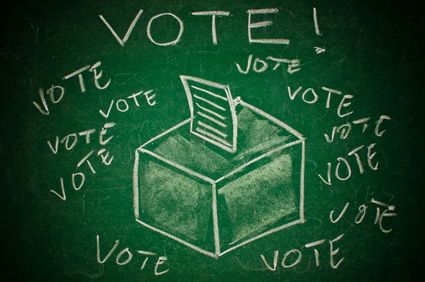Friday, May 23, 2014
By CallFire, Follow me on Google+

The first campaign website was launched by Senator Dianne Feinstein in 1994. By 2007, every presidential candidate had a MySpace and Facebook page, and since then, digital campaigns have become increasingly important with each election cycle. Robo calls, viral marketing, online opinion surveys – the list of political technology tools is long, and they will all make a major impact on the Senate Elections 2014.
Website
It’s striking to note how completely the internet age has revolutionized all aspects of political life – and how quickly it happened. As recently as 2002, a little more than half of all candidates even had a website. By 2006, it was close to 100%. What changed wasn’t a greater understanding of the value of a web presence – that idea was well accepted by the turn of the century – but a greater understanding of the internet as channel through which to collect, create and disperse information. For political campaigns, a good website functions as town crier, fundraising tool and recruiting center.
In 2006, a Bivings Group report identified three tiers of political campaign website sophistication:
- Those that offer basic campaign information like bios, contact details, donations and volunteer opportunities. In 2006, 80-94% of sites offered Tier One services.
- Those that offer rich content like blogs, video, audio and RSS feeds. In 2006, 14-55% of campaign sites qualified for Biving’s Tier Two categorization.
- Those sites offering social networking capabilities, foreign language options and topical rich content like podcasts. No more than 12% of sites qualified for Tier Three in 2006.
The web, then, is the natural starting point for any modern election campaign; an effective site will act as nerve center for the entire campaign.
E-Notifications
Email is the most common type of electronic notification, but the term also applies to other automated forms of communication, such as voice broadcasting, text message and fax.
Many campaign websites allow you to sign up to receive text messages from your candidate. During Obama’s first presidential campaign, he allowed users to sign up for specific alerts according to key issues such as health, education and employment.
The ‘get out the vote’ campaign put these technologies to effective use as part of their drive to improve turnout numbers. E-notifications are one of the most effective get out the vote tools (GOTV tools). According to a study by Michigan and Princeton Universities, people were 4-5% more likely to vote when they received a text message the day before an election.
Robo Calls
The 2006 mid-terms saw a massive increase in the application of robo calls and political autodialer technology; a Pew Report found that 63% of registered voters received some kind of automated phone call from at least one campaign during the final stages of the elections.
Robo calls are attractive to political campaign managers as they offer a route to thousands of potential voters in a short space of time, and at low cost. Candidates simply create a list of contacts, record a message and send it en masse, instantly.
The Future
Political tech continues to get more sophisticated with every election cycle. In 2008, Democratic candidate Mike Gravel established an official campaign headquarters in the alternate reality of Second Life. It was later hijacked by cyber vandals, and subsequently the idea lost traction – but it’s an interesting example of the potential of multimedia campaigns. How will emerging technologies change the landscape over the next ten years? What does it all mean for traditional fundraising and campaigning tactics like door to door canvassing? Let’s stick around an find out. In the meantime, roll on November…
